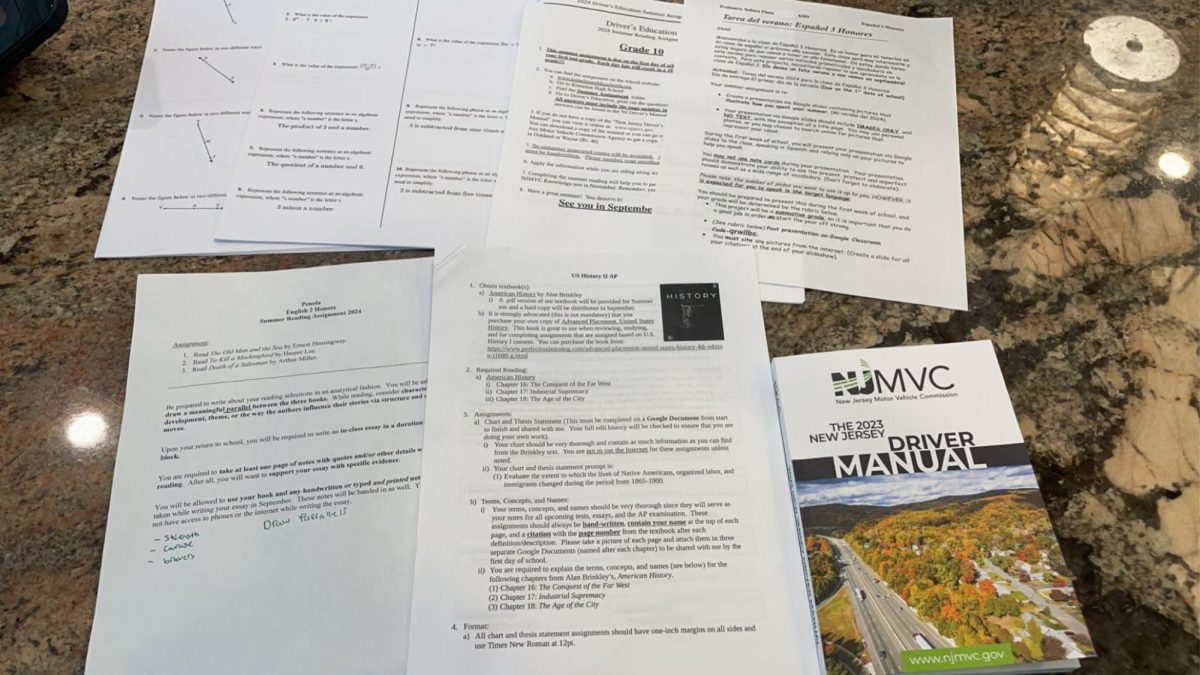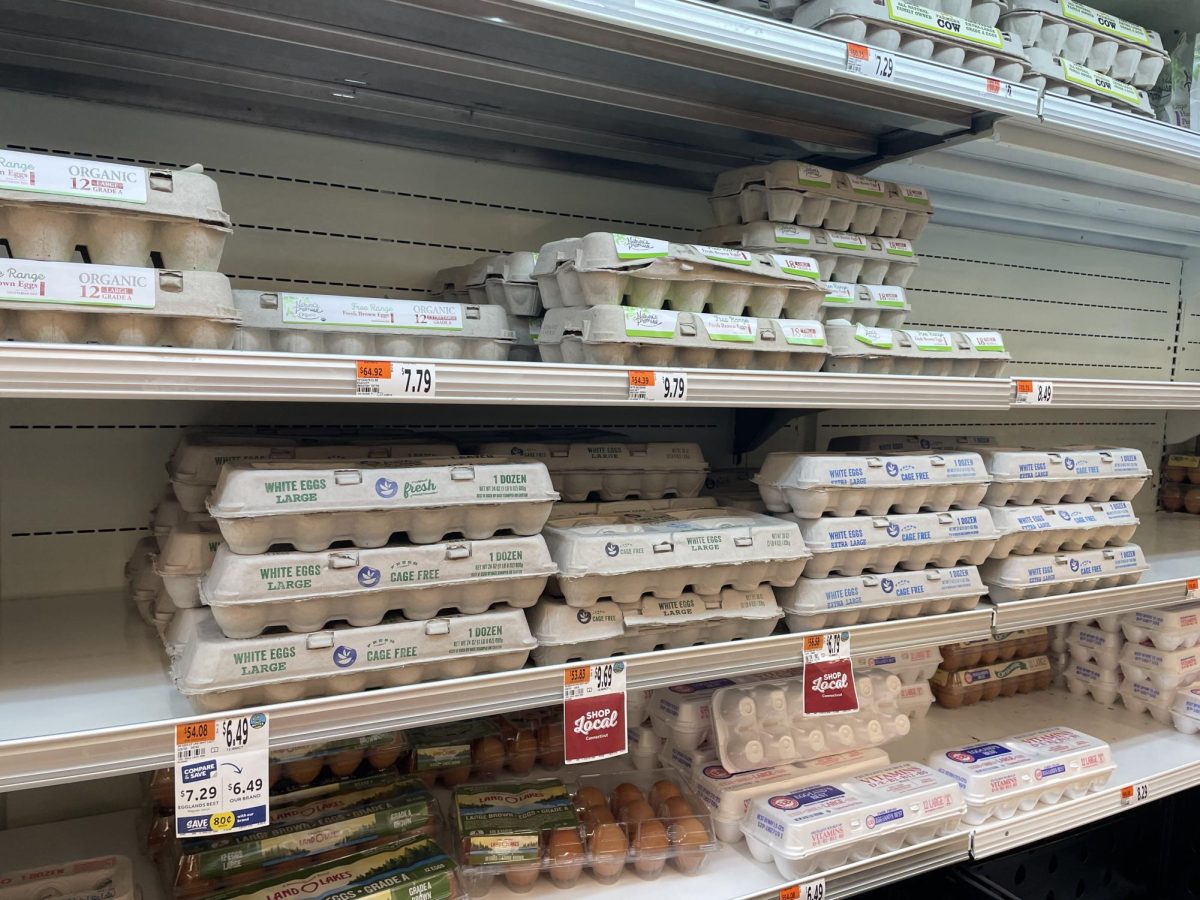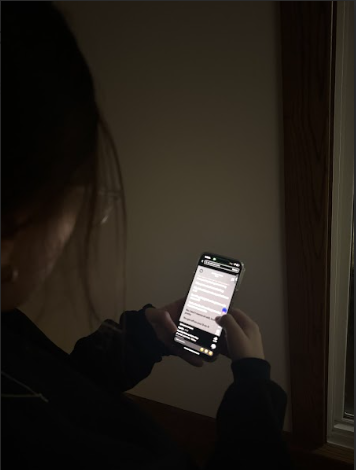Fire-breathing dragons locked in conflict with hundreds of armor-clad soldiers; aliens attacking New York City; colonies on the moon struggling with a food shortage. We’ve all experienced some form of worldbuilding, but how does someone partake in worldbuilding themselves? I can’t say it’s easy, but at least it doesn’t involve any incantations (although it does require some decent spelling).
You can’t start worldbuilding unless you know what you like. English teacher John Penola suggested to new worldbuilders that you “read, consume, and read and watch. See how people who have come before you have done it. Learn from them. Look for the craft that’s going in there, be conscious; see what’s affecting you.” English teacher John DelPiano also suggested immersing “yourself in other worlds, whether they’re books, novels, graphic novels, TV series, whether it’s something in your wheelhouse or out of your wheelhouse, just immerse yourself in other worlds. Feel free to lean on personal experience, your life’s journey, your life’s story.”
But what are some good sources of worldbuilding to go off of? Both Penola and DelPiano recommend Game of Thrones, with DelPiano specifically pointing out how the characters “are fair game. The world and environment were the main characters.” Penola also recommends “The Creator, a really cool sci-fi movie that does really good visual storytelling, and there’s very little exposition. It just trusts the reader to pick up on what they show us.” He also recommends Severance, Avatar, The Matrix, Dune, and “just good sci-fi.”
Now that we have some starting advice, let’s begin worldbuilding! Throughout this article, we’ll be creating a world that you can use for yourself without copyright restrictions! But what exercises should we start with to develop a world? Penola suggests “playing what if. It’s taking these silly, weird concepts and seeing them through. I think the what-if game is a really good one.” What if ocean creatures took the place of humans? Now we have a rough idea for our fantasy world, but where should we start? DelPiano suggests that you “start small, and then build out so you’re not overwhelmed. Start with one character, a relationship between two characters, with one place. You’re building out. It’s a target of sorts, that way it’s not so overwhelming or daunting.”
Let’s start by worldbuilding one location: The Reef. Since a lot of sea creatures make their homes in coral reefs, why not have the main location of this world be a reef? Now, when I’m worldbuilding, I find it’s best to come up with a general idea. The Reef should mimic real coral reefs, so the architecture will be leveled, with the branching design of coral near the top and rocky, lumpy buildings near the bottom. Since there are various intelligent species in this world, The Reef would most likely be divided in terms of species and role; this naturally lends to a story about social roles and would lend well to a rebellious main character. Speaking of which, let’s make some characters!
How should we design our characters, though? Both DelPiano and Penola pointed out that a character should be a clear product of their world. Penola specifically mentioned that characters “have to be recognizable and relatable to us. Most stories have outsiders as the main character, someone who doesn’t fit into their world, and we can relate to that because we don’t fit into their world. That’s why the opening scene of Severance is so effective.” It’s interesting to note that many good characters are products of their world while also being distant from it. A fine line has to be struck for the reader to relate and for the character to seem plausible. Also, I will not be discussing the opening scene of Severance here; if you’re curious, check it out on Apple TV (not a sponsor). I promise, if you stick with it, you won’t regret it.
But characters being relatable isn’t the whole story. As DelPiano mentions, “characters with a unique quality tend to be more interesting; the Sherlock Holmes, people who can dive into their mind palaces. People who can do what we can’t. It’s weird, it’s kind of both: the relatable characters and characters we wish we could be.”
Let’s explore this dynamic with two characters for the ocean world we’re building. One of which will be relatable and average in their world. Let’s have this character be a crab. There are so many crab species, and a character struggling with their identity is no doubt relatable to many. We can also have our completely unrelatable character, a cuttlefish; cephalopods would most likely be the smartest members of this world, and the cuttlefish would have the ability to camouflage, giving them a trait many of us have probably wanted at some point in our lives. Due to their intellect, they’d most likely be snobby and arrogant, but this lends well to a character arc where this cuttlefish ends up being a good friend to the crab. Penola mentioned how characters don’t have to be likeable, instead, “there has to be something about each character that’s pulling us along. Whether we like them, or even if we don’t like them. Questions are a compelling way to engage the audience.” Maybe the cuttlefish gathers random bits of junk for an unknown reason. Maybe the crab keeps thinking about another character without giving any reason why. These unanswered questions are perfect for keeping a viewer hooked.
Now, how do we make names for our characters? Penola suggests being “intentional with names. Often, looking to name origins is a great idea.” DelPiano suggests using “references and allusions to things that are important. So, I would draw upon or tweak names from some of my favorite characters. I like a little inside joke in my writing once in a while.” Let’s have our cuttlefish be named Eve, which could symbolize how they’ll lead the crab and/or other characters down a dark path, or it could be a reference to how they talk like Eve from WALL-E. We can call the crab Red. It’s a bit obvious, but we can use it to signify Red’s anger issues, or it could reference the Red Lobster restaurant chain as a (frankly dark) inside joke.
We’ve gone through some worldbuilding in this article, but what about different genres other than sci-fi? Do they have similar processes? DelPiano notes how “whether it’s Big Brother is watching or dragons and wizards, at its heart, they are still obstacles. It’s still about the human condition, still about growth and self-discovery. It’s just a matter of what form the obstacles take.” Penola notes how the base of a story is the same: “the bones are the same, but the genre, the paint, and exterior are different. It’s play, it’s an imaginary world.”
Here are some last bits of advice on worldbuilding just for you!
Do what you love. You don’t have to write a story, you don’t even need character names. You could just draw images of what your world is, or you could invent a language of some long-gone alien race. Do whatever makes you happy.
Some people say it’s cliche, but writing self-insert characters in middle school is what got me into worldbuilding in the first place. Write about what you’d want to do.
Find the time to write, or even just think up something. A good way to tell if you like your creation is if you can remember it without referencing notes.
I hope this article helped any future worldbuilders, and I hope you create the next big stories. If this seems like something you need to do immediately, I suggest signing up for any creative writing classes, as those are the perfect environments for creativity to flourish.
Thank you to Mr. DelPiano and Mr. Penola for allowing me to use their quotes and offering these insights into the art of worldbuilding.








